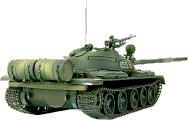PGIII SE vs. PG3D
PG3D is the first game of the two of this series to hit the market. PG3D concentrates on the Western Front, and offers the player the option of playing as the Americans, the British, the French or the Germans, and offers eight campaigns in all: 4 Allied and 4 German.
PGIII SE (why the inconsistent nomenclature?) is the second game of the two of this series to hit the market. PGIII SE (Scorched Earth) concentrates on the Eastern Front, and offers the player the option of playing as the either the Soviets or the Germans, and offers eight campaigns in all: 4 Soviet and 4 German.
First of all, though I can't put my finger on the key differences, PGIII SE feels to be much better than PG3D. The campaigns and their scenarios appear to more dynamic. Is this my imagination? The AI appears to have gotten much smarter with it using flanking attacks and attacks and movements from the rear instead of the usual head-on attacks from the previous games of this series. I also don't remember my air units getting out as far in front as they did in PGIII, but that could be because I haven't promoted too heavily yet. My regrets? There is no naval component at all that I have found so far. Also are there any bridging units? I know that there are units that can bridge themselves, but I haven't found the ones that can help others cross rivers.
The scenario names need to be dumbed-down for Russian language impaired players such as myself. I would rather have "Kursk" as the name of a scenario than "Byomiskyavanovorograd Pulimonovarotskyovanovich". At the worst case, at least put names such as "Kursk" in parenthesis.
I feel that it is pretty annoying to have all the slots chewed up by better leaders, as is the case in PG3D. I have been playing the Patton campaign, and have found myself with surplus promotions on the past three scenarios. So I'm busy promoting leaders who have been on the sidelines the whole time so that they have five or six actions.
I have also found that PG3D sometimes takes away slots without any warning (or at least I am missing the warning by not reading the number of available slots in the scenario briefing). So I start to play, and then find out that I don't have any supporting flak against Me-163s, FW-190Ds, etc., and all I have is a P-51D being piloted by a four star anti-tank commander because I have yet to be given a fighter pilot 12 scenarios into this campaign. And then I noticed that my two best units, both bombers, had also been removed. So I have nothing to shoot down his fighters and nothing to destroy his tanks...
A few other things that I have read: according to "Sonzabird", in PG3D, unit movement is slower, and units cannot be renamed.
SUPPORT
SSI's support for the game is as good as the Bismarck's support of the German Navy. It looks good at first, but then blows up when you try to use it. None of the links appear to work. This site may work for the 1.1 patch that is supposed to be available: http://www.panzergeneral3.com/downloads.html.
PATCHES
After more research, I finally found the patch. I have included the patch on the 5 Star General site (see "5 Star General Home", above) after one or two people reported problems getting it from HERR GENERAL. But you can also try to get it from there as well: http://www.dirk-cremer.de/hg/eng/version.htm > Service > Updates > Panzer General III Scorched Earth. The file on his site is called 74vs11e.zip and is 1.4 MB. On this site it is named PG3SE_v1_1_Patch.zip. In either case, the patch is the same as the stock SSI v.1.1 patch, but that can be really hard to find sometimes.
Dirk Cremer's HERR GENERAL patch is the SSI patch, but with some additional installation notes, which SSI characteristically forgot. I have also annoted those notes a bit further and renamed the files in the zip file for easier understanding and easier installation.
The patch adds five scenarios, prevent the crashes during the Rostov scenario, prevent several Zhukov and Konev scenarios from ending by destroying a unit or capturing a secondary victory hex and, according to SSI, supplies some "Missing text for some scenarios and briefings". The patch can be installed while a campaign is in progress. You have to shut down the game, of course, before installing the patch. But I was seven scenarios into the Guderian campaign, installed the patch, and then kept on playing, and my problem with crashing during the Rostov scenario was fixed. There still appears to be a problem, though, with available movement hexes not showing properly.
Also the version number will read "v1.10", not "v1.0". This is trivial, but just in case anyone else is confused...
1. In spite of the patch, there are still some scenarios with no deployment hexes for replacement units, such as the one after Rostov or the one after that, which is named Caspian Crisis.
2. The weather sounds end after the first combat of a given turn.
The best support is JP's Panzer General 3 Forum, led by Philip Nelson (a.k.a. Reepicheep). Please join the forum and post your ideas there!
USER CAMPAIGNS and MODIFICATIONS
Lasse Jansen has already done some excellent investigation. Please click here to read his excellent white paper if you are interested in modifying the game. Unfortunately, it does not look like modifications will be easy as of this writing (8/25/01). Also see this thread at JP's Panzer General 3 Forum.
As of this revision (11/13/01), there is a new Equipment Editor that has been created... More to follow on that as I find out.
SOUNDS
I love the new sounds, such as the one of infantry taking a beating. The rain and lightning always makes me want to look outside to make sure that it isn't really raining. The metallic thunk of APS shells striking enemy tank hulls is frighteningly good. Any better and I would assume that this game was SSI's plot to promote pacifism and to stop all war. I have also noticed some composite sounds for the first time, such as when a tank gets hit and then the infantry inside goes "uunhhh". How depressing! On the other side, the music gets pretty repetitive pretty quickly, but that's to be expected. If only I could figure out a way to play Tchaikovsky and Wagner while playing the game. If you have any suggestions, then let me know (seriously).
FEATURES
There are many new and interesting features of PGIII SE. For a quick run down, please see 5 Star Game Comparison which compares most of the games of this "series".
GRAPHICS
Overall a big thumbs up. I love the new graphics, such as the rain, snow and the fog that comes in gradually. The lightning is fantastic as well. The tanks and their swiveling turrets are a beauty to behold. The same goes for the dust that tanks kick up behind them as they advance to their objectives. And when units get hit, then catch on fire. The game plays rapidly too, though I am running on a 1.3 GHz machine with a 32MB graphics card. I don't know if it would be as nice with a slower machine with a lesser graphics card. I know that I couldn't run the game at all on my old 500 MHz with the built in graphics card. Some of the icons look like they weren't well thought out. For example, the T-34s don't look like T-34s. Also I still dislike the way units tend to get lost in towns and forests, which makes this game hard to play on smaller monitors without incurring serious eyestrain. One interesting side note, I found that if I rotate the map enough, I start to get motion sickness. Try it; it's fun!
If you're swapping back and forth between different SSI games of this series like I do, routinely swapping from Pacific General to PGII to PGIII, then you'll probably have to change the acceleration settings for your graphics card. This isn't that big of a deal, but just remember this in case the game doesn't run as quickly as you would like.
STRATEGY
Also a few preliminary thoughts on strategy... I found, pretty quickly, that there was no point in moving units by themselves. I move them all pretty much in unison, sometimes even moving each one leg at a time. I feel that the units that need to get promoted the fastest, at least initially, are, in the following order: recon, artillery, fighters, bombers, tanks, AD, AT, infantry. That isn't to say that one shouldn't have a powerful infantry or tank unit out there in one's core forces, but the campaigns (that I have played so far appear to invariably) start out with a 4 Star infantry or better and two 3 star tanks or better. Promoting the recons rapidly is good so that they can scout out the best strike path to one's objectives, and the artillery is important because they're typically slow units anyway, and it is important to have extra legs so that they can dismount and provide adequate support.
One thing that always makes me nervous in this game is that I always feel susceptible to counterstrikes on my flanks. I never seem to have enough units to defend myself successfully. I don't mind this angst. I think that it is what keeps the game flowing smoothly, as opposed to PGII, which I also like, but which seems to have hundreds of units sometimes, making movement a real chore. But this lack of units keeps the game suspenseful, like in a horror movie, when I keep wondering how and when I am going to get hit. This game, more than the others of the series, feels like a game of hunting and being hunted.
OBJECTIVES
If you have a primary objective (gold diamond) in your possession at the start of the scenario, then always leave at least one unit to defend it (AT or Infantry). Keep defending each primary objective that you capture by leaving at least one unit behind. Nothing is as aggravating as to inadvertently leave one open, move on to the next objective only to find out that one of the enemy recon units has just liberated your hard-won gain.
View the strategic map before starting any movement. When you are first starting off learning the game, only try to get your primary objectives. The only secondary objective that you should try to get are the ones that are on your way or an airfield to help you re-supply your aircraft.
For the "exit the map" type scenarios, go for units with high mobility.
If you're interested in getting Major Victories (and who wouldn't be?), then avoid secondary skirmishes. Go for the primary objectives. Leave the fewest number of units (other than 0) that you can to defend any primary objectives and move on. Don't get distracted killing units that aren't part of the objectives or standing directly in your way of capturing them. If you have cluttered up your own primary advance, then keep any units with excess movement to the rear or to the flanks where they can hide or create ambushes.
GEOGRAPHY AND MOVEMENT
Always stop on the middle of a bridge first before crossing it. There's usually an AT on the other side, especially if hex on the other side is a town. Stick to the roads, but avoid plotting a path that takes you through ravines or any place where you will be hemmed in by terrain on either side. This isn't always possible, so choose the path that appears to give you the most open country even if it may be a little longer. Whenever possible, leave tanks out in the open; make sure that infantry are not.
Always leave room for non-tracked vehicles on the road. In other words, move tanks and other tracked vehicles such that they end their movements off of the road. That way you will have room for your other units on the road. This is especially important for the Soviets early in the campaigns, who start off with few tracked vehicles except for tanks.
Move your units in the Spunkmeyer Turtle formation. For example, I had pretty good luck defending Moscow with about six-eight units in turtle formation clustered around a Su-14-Br.2 SP artillery unit. The other units were two BT-7s, an Engineer, a ZIS AA unit, two other 85 series AA units, a KV-1, a BA-6 recon and I forget the others. We scored three ambushes, and that doesn't count the two or three air units that came in and got shot up by my three AAs which were all sitting in one line at the back of the road.
Some units can't retreat into rivers like they could in previous games. This may help force a unit to surrender where it wouldn't have done so previously.
TANKS
Having tanks is what this game is all about, isn't it? In many ways, they are the most versatile of units in PGIII as they have been in other games of the series. They are very well balanced, and can take on most ground units of other classes except for better tanks. But that's not always the case. Enemy AT and AA units can be incredibly difficult for armor to destroy as well as any well placed infantry, AA or AT unit that has been entrenched in a city or other such terrain. So use your tanks out in the open, by pass combat in cities, and let your other units do that instead.
FIGHTERS
Having a fighter with three or four stars is good so that you can use the Eagle Eye (long range sighting) and still be able to get out of harm's way (couched in the form of a previously hidden AD unit). I almost never, ever use my fighters to attack fighters. They certainly never go looking for trouble unless it is to finish off an enemy fighter that has already been decisively weakened by my AD. One of the main reasons is that I like to play the Soviets, and their aircraft are inherently weaker than the German ones. The other reason is that the repair an aircraft sometimes means being out of commission for two or more turns as the aircraft has to end up on a friendly airbase before being repaired.
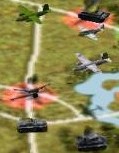
BOMBERS
I typically use these only to bomb a target once or twice. I make sure that there are enough movements left to rejoin an escorting fighter, and, if possible, to hide in the clouds. Bombing enemy units more than once or twice leads to diminishing returns and a diminishing supply of bombs which can sometimes only be rectified by a long trip back to a friendly airfield. As Andy Gouky (Spunkmeyer) has pointed out, make sure that you have another unit on hand to destroy or at least stay adjacent to the bombed unit, or your bombs are just wasted. The only way to kill German heavy armor without taking too much collateral damage is to use bombers. For that reason, I tend to purchase bombers with high hard-attack values instead of those with high soft-attack values, all else being equal.
ARTILLERY
More than anything else, artillery units appear to be a balancing act. For example, the units that typically have the highest attack values often have fewer available attacks (such as the German K17 piece which can fire a range of 5 hexes, but can only fire twice per turn). Towed artillery is usually better than self-propelled for sheer fire-power, but then doesn't have the mobility since at least one phase must be used for the dismount at the end of each turn so that it can provide fire support. It is probably best to have at least one self-propelled (SP) gun when they are available. Promote it heavily, and keep it in the middle of your formation to provide constant support. Also make sure that any artillery unit you have has enough ammo since it can provide up to three combat support bombardments per turn. SP guns are also good for scenarios that require very high mobility. For that reason, I tend to purchase SP guns over towed artillery, all else being equal. In good weather, the best artillery comes in the form of bombers. See BOMBERS, above.

Quick Setup is useful because you can use it to shoot at multiple targets along the way instead of moving forward to a final destination, then setting up and shooting at one or more targets within range of the final destination. So, one could move one segment, fire at a Pioneere unit off to the left, advance again, fire at a towed artillery unit, and then advance yet again, and fire at an enemy 88. One of my favorite units of all time right now is an American 155mm gun which has three movements and three combat attacks, which I often use in conjunction with Quick Setup to do some heavy damage along the way.
FORTS/STRONGPOINTS
These units are hard to kill. They get suppressed easily, but I never seem to have enough infantry on hand to kill them since I usually leave my infantry behind to defend captured cities. This means that the forts have to be destroyed from the air using bombers with the bunker killer feature turned on. Just make sure that there isn't any enemy flak hiding two or three hexes behind ready to rip your bombers to shreds. The good news is that forts don't appear to take replacements between turns. So they can be weakened successively over several turns until they are destroyed.
I'll add more to this as I get time.
Cheers,
Narayan
August 20-November 14, 2003
Thank you to Philip Nelson and Andy Gouck!

 Home
Home Hearts of Iron
Hearts of Iron


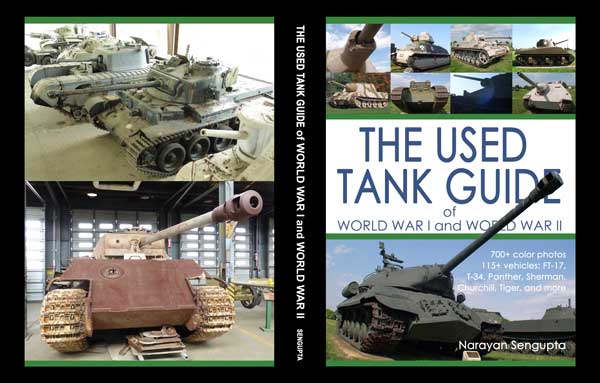

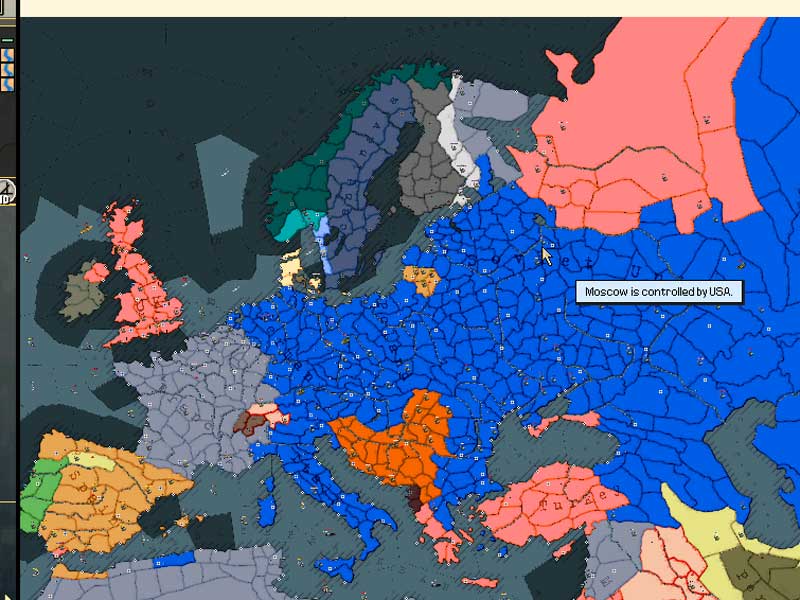
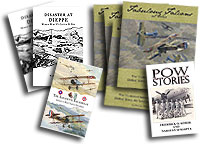


 French Military Victories...
French Military Victories...